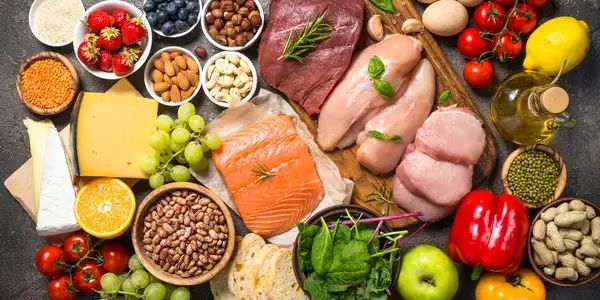
Weight loss diets are a common topic in the health and fitness industry. They promise quick and easy solutions to weight problems and are often touted as the...
Read more


|
Nutrient |
Per 100 g |
|---|---|
|
Calorific value |
150 kJ |
|
Energy |
36 kcal |
|
Carbohydrates |
7 g |
|
Protein |
0 g |
|
Fat |
0 g |
The food Papaya (fresh) is composed of the following macronutrients.
Papaya is a nutrient-rich fruit with many health benefits. Some of these benefits are:
Papaya is a tropical fruit grown in many parts of the world. It is ripe when the skin turns a yellow-orange color. Papaya can be eaten raw or cooked and is often used in salads, juices, smoothies and desserts.
Papaya contains many vitamins and nutrients, including vitamin C, vitamin A, vitamin E, folic acid and potassium. It also contains enzymes such as papain and chymopapain, which can aid digestion and relieve pain and inflammation.
How can I recognize a ripe papaya?
You can recognize a ripe papaya by its color. If the papaya is yellow-orange and gives a little when pressed lightly, it is ripe. If the papaya is still green, it should be left for a few more days until it is ripe. A ripe papaya will often also have brown spots on the skin, but these are not a sign of inferior quality.
How are papayas stored properly?
Papayas should be stored at room temperature until they are ripe. Ripe papayas can be stored in the refrigerator to extend their shelf life. Cooked or pureed papaya should be stored in the refrigerator and consumed within 2-3 days.
What is the difference between sweet and bitter papaya?
Sweet and bitter papaya are two different types of papaya. Sweet papaya is the papaya found in most supermarkets and fruit stores. It has a sweet, juicy flavor and a soft, edible skin. It is used raw or in juices and smoothies. Bitter papaya, also called pawpaw, is another variety of papaya that is less common than sweet papaya. It has an unpleasant taste when eaten raw and a harder skin that is not edible. Bitter papaya is mainly used as a vegetable and must be prepared appropriately before consumption. Bitter papaya is commonly used in Asian and African cuisine. It is important to know that sweet and bitter papaya contain the same nutrients, but the taste and use may be different.
I love this app! The food is super varied and filling (and soo delicious!). With one purchase I have the ingredients for a whole week together, thanks to the shopping list. The ingredients are also readily available and not really expensive.
Nicole — App User
The first app in the field of nutrition tips that really convinces me. Updates get minor issues out of the way and new features are added all the time. Top!
Unknown user — App User
ave already tried many nutrition apps but here it is really great and you save a lot of time because you do not have to enter all the meals yourself! 👍👏
Mareen — App User
I don't usually rate apps but this one has to be rated.... I have never had such a great app just fits everything.... The nutrition plans are just absolutely awesome just everything is awesome many many thanks
Mareen — App User
This app is an excellent support for healthy eating even with little time and effort! Super recipes are also included. Highly recommended!
Lennert — App User